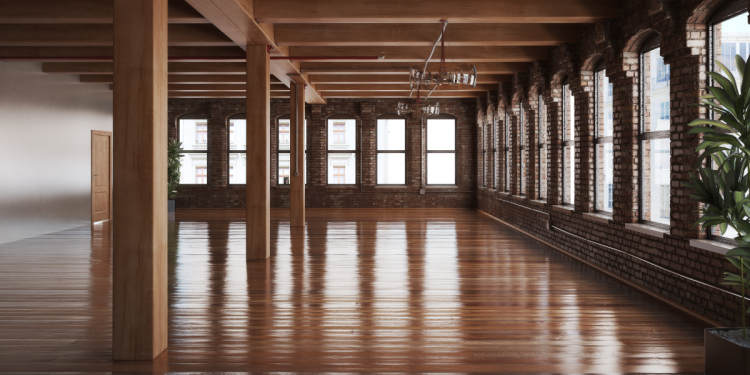Swedish studio White Arkitekter has constructed a timber-framed office structure in Gothenburg that bears a resemblance to an upturned ziggurat, dubbed as Nodi.
As the foremost wooden office building in the Swedish city of Gothenburg, Nodi was designed by White Arkitekter to display the mechanical possibilities of wood in a building.
White Arkitekter’s Nodi building
White Arkitekter’s Nodi encompasses a retail store on the ground floor and houses offices on the four floors above it.
The upturned structure includes a surfeit of cantilevers, permitting the floor plates to imperceptibly rise in size from the bottom to the peak of the five-storey block.
Joakin Hansson, the Chief Architect of the White Arkitekter project, stated that the firm had to incorporate great courage to make a project like Nodi a successful reality.
Hansson stated that owing to the tightly knit, ambitious, and cooperative nature of all parties involved in the White Arkitekter project, the firm has been able to grow a groundbreaking project that is situated in Sweden’s Gothenburg city.
This building is the foremost wooden office buildings in the area, he said.
White Arkitekter’s Nodi building is situated in the Nya Hovås district in the south of Gothenburg.
The most idiosyncratic element is its wooden structure which is perceptible both inside and out.
The building holds a pillar-beam construction of glue-laminated timber, also called glulam, which was produced by Moelven, a Swedish firm. The glulam was manufactured using fir trees that are present in Norway and central Sweden.
The interiors of the building bear an eternal warm feel, owing to its wooden nature. Owing to the depth of the building, the wood delivers seating niches within the façade of the building.
Hansson told the Dezeen magazine that White Arkitekter wanted to reveal as much of the wooden frame as possible, to display the meek yet expressive aesthetics of wood.
The proportions of the Nodi building are bigger than an equivalent steel building, Hansson stated. According to him, buildings that are made out of wood need to possess thicker floors and larger pillars.
The Nodi building was developed by the real-estate firm Next Step Group. It encompasses 4 office floors that are enclosed over the ground-floor retail space.
The design of the offices is intensely rational, with 4 corner units on every level, prearranged along the circumference of the central core that houses kitchens, toilets, meeting rooms, lifts, and a flight of stairs.
The arrangement of spaces allows room for an abundance of flexibility. A tenant could effortlessly take two or more adjacent units and join them.
A surfeit of two units is situated on the upper level, along with a rood terrace that is common for all tenants.
White Arkitekter has emerged as one of the pioneers in wooden architecture, after pledging to make all of its structures carbon-neutral by 2030.
The studio possesses offices throughout the Swedish geography and also maintains a presence in Norway, the UK, and Denmark.
Recently, the firm finished constructing Scandinavia’s first zero-energy hotel and one of the world’s tallest timber towers.
The Nodi building is predicted to emerge as a hotspot for local entrepreneurs.
With Nodi, the White Arkitekter studio has faith that it will showcase its ability to design and build contemporary wooden buildings that adhere to building regulations and facilitate a more comfortable and healthier atmosphere.
Hansson added that it was essential that a market was created for these types of sustainable projects and that tenants believed that it facilitates attractive workspaces.
The industry possessed a conservative character and Hansson stated that eventually, all firms tend to opt for suitable paths.
So, to be successful, it was essential that the whole team was harmonious in their belief of succeeding, he said.


















